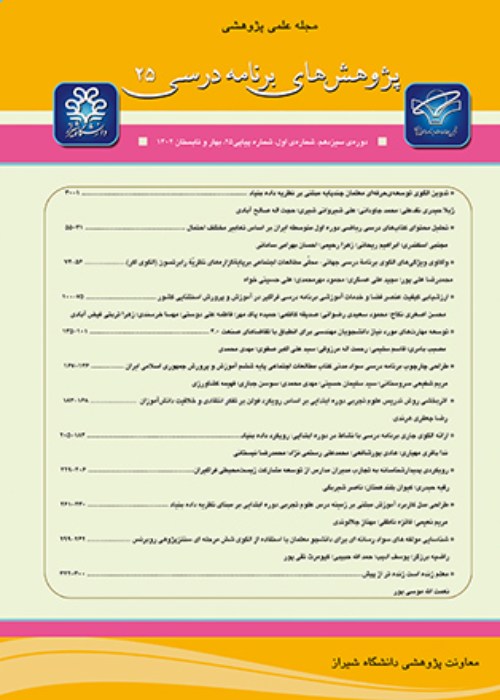A Phenomenological Approach to School Principals’ Experiences of Developing Students’ Environmental Participation
The emergence of various environmental crises has created many problems for governments across the world. This has forced governments to recognize the factors causing environmental degradation and pollution and take steps to create programs for environmental protection (Akadiri et al., 2012). The initiatives and plans developed by governments and organizations to ensure long-term environmental sustainability are necessary to preserve and maintain nature (Scheiner & Willig, 2011). Meanwhile, educational institutions should plan in line with other organizations to protect the environment (Dibai & Lahijanian, 2008). One of the most important educational institutions in any country is school, which, in addition to the task of education, can play an important role in enhancing students’ environmental awareness (Hosseinpour et al., 2018). Schools are the most basic educational context for developing a sense of environmental responsibility in students (Parieshani et al., 2018). The success of any environmental education depends on whether individuals and institutions take responsibility for creating for the environment and change their daily actions to reduce environmental pollution (Barr, 2003). Currently, one of the most important topics that require further research is what different institutions and organizations should do to protect the environment. This research sought to identify the environmental challenges facing schools and provide some suggestions to address those challenges.
1- What measures have school principals implemented to promote environmental education and protect the environment?
2- Based on school principals’ experiences, what are the challenges facing schools in promoting environmental protection?
The current research was conducted using descriptive phenomenology, which is a qualitative research approach. The context of the current study was Sanandaj (Kurdistan province, Iran) and its educational Districts 1 and 2. The participants were principals of girls’ and boys’ primary schools in the academic year 2021-2022. The participants were selected using purposeful sampling. Among the schools in Sanandaj, 16 schools were active in the field of environment and had carried out some environmental initiatives. Semi-structured interviews, which included 8 general and open questions about the research topic, were used to collect qualitative data. In this regard, one of the researchers went to each school and conducted face- to-face, semi-structured interviews with the principals. Finally, collected data from these interviews were analyzed using Attride Sterling’s three-step thematic analysis method.
According to the results, schools could be classified into six categories based on the strategies they followed to support the environment. These six groups of schools focused on the following aspects of the environment: 1) enhancing students’ environmental awareness, 2) improving students’ environmental behavior, 3) promoting a sense of affinity between families and the local community with nature, 4) creating environmental-friendly contexts and equipment to optimize school management and minimize school expenses. , 5) promoting students to the representatives of well-being in the family and society, and 6) reducing the consumption of natural resources. More specifically, the third category of schools, for example, tried to bring families and the local community together and succeeded in heightening their environmental awareness (López et al., 2021). The fourth category of schools was focused on improving the context and physical conditions of schools by using optimal equipment, which, in turn, can be effective in instilling environmental responsibilities and values in students (Akbari Armand et al., 2020).
Organizational limitations in the education system were the primary obstacles raised by school principals (Soleimani et al., 2019). According to participant principals, educational limitations were the second group of challenges to environmental strategies facing primary schools in Sanandaj (Gündüz & Erdoğuş, 2017). The third group of obstacles concerned the community’s limited environmental awareness, which refers to the lack of awareness and cooperation by families and the media. It also refers to the lack of parents’ trust in schools in terms of safety and health, which is rooted in reductionist beliefs considering schools as closed classes limited to teaching of students by teachers (Soleimani et al., 2019). The lack of facilities and allocation of a limited budget for environmental activities formed the fourth group of challenges (Salaran et al., 2013). Structural and physical limitations were referred to by principals as the fifth group of obstacles undermining environmental activities in Sanandaj primary schools. School principals pointed out that neither school buildings nor their physical spaces were appropriate for promoting environmental activities in schools (Soleimani et al., 2019).
According to the results of this research, schools, as one of the key pillars of education in any country, can take measures to reduce energy consumption, enhance students’ environmental awareness, and promote a sense of friendship between families and society, on the one hand, and nature, on the other hand. In addition, schools can aim for green architecture and design, cooperate with environmental organizations, play a role in both creating green spaces in the city and cleaning public places, use different technologies for communication and exams, and change their consumption pattern. Other strategies that can be followed by schools to protect the environment include avoiding excess waste, reducing costs, and improving efficiency. In this regard, schools are recommended to utilize optimal equipment and smart sensors and create green spaces with local trees and plants that need little watering. These simple but effective measures will not only add to the beauty and cleanliness of schools but also help schools save energy and reduce their costs. The abovementioned measures and strategies, if implemented by schools, will turn schools into beautiful places that can provide job satisfaction for teachers and peaceful education for students.
- حق عضویت دریافتی صرف حمایت از نشریات عضو و نگهداری، تکمیل و توسعه مگیران میشود.
- پرداخت حق اشتراک و دانلود مقالات اجازه بازنشر آن در سایر رسانههای چاپی و دیجیتال را به کاربر نمیدهد.


